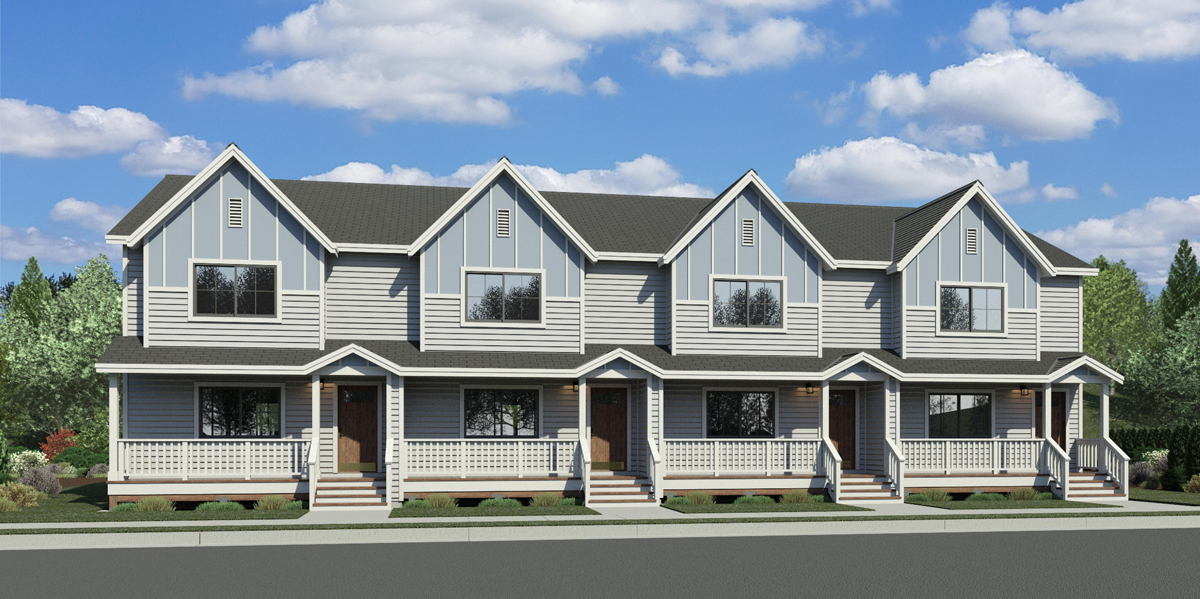Real Estate
Expert Tips on How to Increase the Value of Your Home Through Smart Renovations

Introduction
Are you considering renovating your home but unsure of where to start? Look no further than this blog post! We’ve compiled expert tips on how to increase the value of your home through smart renovations. With our guidance, you can transform your space into a stunning and valuable asset that will impress potential buyers or simply make it more enjoyable for you and your family. Whether it’s updating appliances or revamping the bathroom, we’ve got you covered with innovative ideas that are sure to elevate your living experience. So let’s dive in and get started on creating the home of your dreams!
Kitchen Renovations
When it comes to renovations that increase home value, the kitchen is king. A well-designed, stylish kitchen will not only make your home more desirable to potential buyers, but can also add significant value to your property.
If you’re planning a kitchen renovation, here are a few tips to keep in mind:
1. Focus on functionality: A functional kitchen layout is crucial for a comfortable and efficient cooking space. Make sure your design takes into account the workflow of meal preparation, and includes plenty of storage for pots, pans, and other cooking essentials.
2. Consider the latest trends: Keep your kitchen design up-to-date with the latest trends. Buyers will be looking for a space that feels modern and stylish, so incorporating some current trends will help increase your home’s value.
3. Don’t skimp on quality: When it comes to appliances, countertops, and other materials, be sure to choose high-quality items that will stand the test of time. Cheap materials may save you money upfront, but they’ll likely need to be replaced sooner than higher-quality options— costing you more in the long run.
4. Invest in professional help: Unless you’re a experienced contractor yourself, it’s worth hiring a professional kitchen designer or renovator to help with your project. They’ll be able to advise on the best layout for your space, select materials that fit your budget and style preferences, and oversee the construction process from
Bathroom Renovations
Bathrooms are one of the most important rooms in a home, so it stands to reason that renovating them can have a big impact on resale value. But where do you start? And how can you be sure you’re making smart choices that will appeal to buyers?
Here are some expert tips on how to increase the value of your home through bathroom renovations:
1. Focus on the basics. When it comes to bathroom renovations, making sure the basics are in order is key. This means ensuring that plumbing and electrical systems are up to date and in good working condition. Buyers will be turned off by bathrooms that need work in these areas, so it’s important to make sure they’re taken care of before starting any cosmetic updates.
2. Keep it neutral. When choosing finishes and fixtures for your bathroom renovation, it’s best to stick with neutral tones and classic styles. This will help appeal to a wider range of buyers and ensure that your bathroom feels timeless rather than dated.
3. Pay attention to detail. Small details can make a big difference in a bathroom renovation. Things like updated hardware, well-designed storage solutions, and high-quality materials will all be noticed by potential buyers and add value to your home.
4. Don’t forget about curb appeal. The exterior of your home is just as important as the interior when it comes time to sell, so don’t forget about curb appeal when planning your bathroom renovation. Things
Living Room Renovations
When it comes to home renovations, the living room is often one of the first spaces that comes to mind. After all, it’s typically the largest and most visible room in the house. But just because living room renovations are a popular choice doesn’t mean they’re always a good investment.
Before embarking on any type of home renovation, it’s important to do your research and understand the potential return on investment (ROI). With that in mind, here are a few expert tips on how you can increase the value of your home through smart living room renovations:
1. Start with a plan: As with any renovation project, it’s important to start with a clear plan and budget in mind. This will help ensure that your project stays on track and doesn’t end up costing more than you originally anticipated.
2. Keep it neutral: When it comes to paint colors and finishes, opt for neutral tones that will appeal to a wide range of buyers. Avoid anything too trendy or specific to your personal taste, as this could turn potential buyers off.
3. Update fixtures and hardware: Replacing outdated fixtures and hardware is a quick and easy way to give your living room an updated look. Stick with classic styles that won’t go out of fashion anytime soon for the best ROI.
4. Invest in storage: One of the biggest complaints buyers have about homes is lack of
Bedroom Renovations
When it comes to bedroom renovations, there are a few key things you can do to increase the value of your home. First, focus on creating a more spacious and open layout. This can be accomplished by removing unnecessary furniture and clutter, as well as by opening up wall space with strategic shelving or storage solutions.
Another great way to add value to your bedroom is through updated finishes and fixtures. Fresh paint, new flooring, and upgraded hardware can all make a big impact in terms of both aesthetics and resale value. And finally, don’t forget the power of good lighting! By installing additional lighting fixtures or even just making sure existing ones are in good working order, you can create a warm and inviting space that will be sure to impress potential buyers.
Outdoor Renovations
When it comes to increasing the value of your home, there are a number of factors to consider. One important factor is the condition of your home’s exterior. If you’re planning on selling your home in the near future, investing in some outdoor renovations can be a smart move. Not only will it make your home more appealing to potential buyers, but it can also help you boost its resale value.
If your home’s exterior is in need of a makeover, start by pressure washing the siding and trim. This will instantly freshen up the look of your home and make it more inviting. Once you’ve pressure washed, take a close look at your home’s trim and siding. If either is cracked, chipped, or peeling, they should be repaired or replaced. Replacing outdated or damaged siding is one of the most effective ways to increase the value of your home.
Another outdoor renovation that can pay off come resale time is a new coat of paint. A fresh coat of paint can do wonders for the appearance of your home’s exterior. When choosing a color scheme, opt for something neutral that will appeal to a wide range of buyers. You may also want to consider painting your front door a fun, eye-catching color like red or yellow. This is an easy and relatively inexpensive way to add curb appeal and boost your home’s value at the same time.
Conclusion
Renovations can be a great option to increase the value of your home. With these expert tips, you will know exactly what smart renovations to make in order to add maximum value with minimum effort. From easy aesthetics like painting and landscaping, through minor rooms upgrades such as adding an extra bathroom or updating kitchen appliances, all the way up to major projects such as converting the basement into a living space – there are plenty of smart investments that can give your home the boost it needs!
Real Estate
Property in Pune: Your Complete Guide to Buying the Best Homes

Introduction
Pune has grown into one of India’s most dynamic cities, attracting homebuyers and investors from across the country. Known for its pleasant climate, modern infrastructure, and booming IT and education sectors, the demand for property in Pune has risen steadily over the years. Whether you’re looking for a residential apartment, a luxury flat, or commercial property, Pune offers a perfect mix of lifestyle and investment opportunities.
At Properties Dekho, we bring you verified listings of property in Pune for sale to help you make confident and informed decisions. From affordable 1 BHK homes to premium 4 BHK apartments, our platform covers every segment of Pune’s thriving real estate market.
Why Choose Pune for Real Estate Investment
When it comes to stability and long-term value, few cities match Pune’s potential. The city combines modern living with a balanced lifestyle, making it ideal for both working professionals and families. If you’re planning to buy property in Pune, here’s why it’s one of the best choices you can make:
- IT and Industrial Growth: Pune’s booming IT corridor in Hinjewadi, Kharadi, and Magarpatta has created huge housing demand.
- Educational Excellence: Renowned institutions attract students and families, ensuring consistent rental returns and property appreciation.
- Quality Infrastructure: Smooth roads, metro connectivity, and green surroundings make it one of the most liveable cities in India.
- High ROI Locations: The property rates in Pune continue to appreciate across all major localities, offering great returns on investment.
These factors have transformed Pune from a peaceful city into a thriving metropolitan hub for real estate investment.
Buy Property in Pune: Options for Every Lifestyle
The Pune property market caters to everyone from first-time buyers to luxury seekers. Whether you want a modern apartment, a villa, or a commercial office space, you’ll find plenty of property in Pune for sale that fits your budget and lifestyle.
- Affordable Apartments: Ideal for small families or individuals who want a comfortable home at a reasonable price.
- Luxury Homes: Premium flats and penthouses in areas like Baner, Kalyani Nagar, and Koregaon Park offer top-notch amenities and style.
- Villas & Row Houses: Spacious living options in areas like Wagholi and Hadapsar combine peace with accessibility.
- Commercial Properties: Ideal for startups and established businesses looking for office space in Pune’s fast-developing zones.
Understanding Property Rates in Pune
Before you invest, it’s important to understand property rates in Pune. Prices vary widely depending on the location, infrastructure, and project type. Premium areas like Kharadi, Baner, and Aundh command higher prices, while developing localities such as Wagholi, Hinjewadi, and Hadapsar offer affordable options.
In the last few years, Pune’s real estate market has shown steady price appreciation due to rising employment opportunities and infrastructure growth. The metro expansion and road connectivity projects have further boosted the value of property in Pune for sale, making now a great time to invest.
Top Localities to Buy Property in Pune
Choosing the right location is key to a successful investment. Some of the most preferred areas for buying property in Pune include:
- Hinjewadi: The IT hub of Pune with numerous new housing projects and great connectivity.
- Kharadi: A rapidly developing area known for modern living and proximity to EON IT Park.
- Baner: Offers premium lifestyle amenities, great road access, and strong appreciation value.
- Hadapsar: Affordable and well-connected, perfect for first-time buyers.
- Wakad: Popular among families for its schools, shopping centers, and easy access to the Mumbai-Pune Expressway.
- Koregaon Park: A symbol of luxury living and elite lifestyle in Pune.
These localities offer everything a modern homebuyer looks for—convenience, safety, and value growth.
Buy Property in Pune with Properties Dekho
At Properties Dekho, our mission is to make your home-buying journey effortless and rewarding. We list genuine and verified properties across Pune to help you find your dream home without stress.
Why Choose Us:
- 100% verified property listings.
- Real-time updates on property rates in Pune.
- Expert consultation and property comparisons.
- Assistance with site visits, paperwork, and financing.
- Wide range of properties – from affordable flats to luxury villas.
Our platform makes it easy to browse, compare, and buy property in Pune that suits your lifestyle and budget.
Future of Real Estate in Pune
The future of Pune’s real estate market looks promising. With ongoing development projects, rising employment, and improved infrastructure, property rates in Pune are expected to continue increasing. Investors are showing growing interest in Pune’s outskirts such as Wagholi, Ravet, and Tathawade, which offer modern projects at affordable prices.
The city’s growing tech industry ensures consistent demand for property in Pune for sale, making it a smart long-term investment for both residents and non-resident Indians (NRIs).
Conclusion
Pune is more than just a city it’s a lifestyle destination where modern living meets peace and opportunity. Whether you’re planning to buy property in Pune for personal use or investment, the city offers unmatched potential and comfort.
Also Read: construction company in Lahore
Real Estate
Why Custom Home Builders Define Luxury and Comfort

Introduction
In today’s world, true luxury isn’t about marble floors or chandeliers it’s about personalization, experience, and comfort tailored to the way you live. The custom home builders leading this movement have redefined what luxury means in residential design. They understand that comfort is not one-size-fits-all, and that elegance lies in the details crafted specifically for each homeowner.
The best custom home builders don’t simply create houses; they design personal sanctuaries that balance opulence with ease. Their artistry lies in transforming dreams into physical spaces where every material, layout, and finish feels intuitive and deeply personal.
Luxury today isn’t about excess it’s about harmony. And that’s precisely what skilled custom builders deliver.
The New Meaning of Luxury in Home Design
1. Beyond Aesthetics: A Matter of Experience
Luxury used to mean visible extravagance—grand staircases, ornate details, and glossy finishes. But modern luxury, as envisioned by custom home builders, is quieter and more meaningful. It’s the ability to live comfortably and beautifully, surrounded by spaces that reflect your life, values, and rhythms.
A luxurious home today feels effortless. It flows naturally, adapts to your needs, and supports a sense of calm. It’s built with materials that age gracefully, technology that simplifies daily life, and craftsmanship that never needs attention yet always commands it.
2. Tailored for the Individual
The best custom home builders redefine luxury by designing from the inside out. Instead of imposing trends, they start with you—the way you cook, entertain, work, rest, and move through space. Every design decision, from the orientation of a window to the placement of a reading nook, responds to your habits and aspirations.
Personalization is the new prestige. And in that sense, the truest luxury is individuality.
Craftsmanship as the Foundation of Comfort
1. Built, Not Manufactured
There’s a world of difference between a house that’s built and one that’s produced. The custom home builders who excel know that comfort begins long before the first wall goes up. It’s embedded in the planning, precision, and attention to detail that define handcrafted construction.
Every curve, joinery, and texture is deliberate. These builders view a home as a long-term companion, not a commodity. That devotion to craftsmanship ensures that comfort isn’t just felt—it’s built into the DNA of the structure.
2. Materials That Speak of Quality
Luxury is tactile. It’s the feel of solid wood underfoot, the smooth glide of a perfectly fitted door, the quiet confidence of natural stone. The best custom home builders choose materials not just for their look, but for their longevity and emotional resonance.
Whether it’s reclaimed timber with a story or sustainably sourced marble that glows in natural light, every material is a reflection of care. When chosen thoughtfully, materials make a home feel warm, grounded, and timeless.
The Science Behind Seamless Comfort
1. Smart Design Meets Smart Living
Luxury today isn’t loud it’s intelligent. Modern custom home builders integrate cutting-edge technologies that simplify life without overwhelming it. From climate control systems that learn your preferences to lighting that adjusts to your mood, comfort now extends beyond physical design to digital responsiveness.
A truly luxurious home anticipates your needs. It opens the blinds as the sun rises, warms the floors before you step out of bed, and keeps you secure with subtle automation. The best custom home builders know how to weave technology into the home’s fabric so it enhances daily living without ever intruding.
2. Spatial Psychology: Comfort Through Design
Luxury isn’t always visible it’s often felt subconsciously. Great builders understand how proportions, lighting, acoustics, and flow shape emotional comfort.
Spaces that breathe, transitions that feel natural, and layouts that promote togetherness or solitude when needed—these design choices elevate not just aesthetics but wellbeing. Most custom home builders use science-backed design principles to create homes that are intuitively livable and emotionally satisfying.
The Balance of Beauty and Function
1. Form That Serves Function
Luxury fails when it sacrifices usability. The genius of great custom home builders lies in balancing elegance with everyday practicality. A stunning kitchen is worthless if it doesn’t make cooking enjoyable; a spa-like bathroom must also function flawlessly under daily use.
The best custom home builders approach every design decision through the lens of livability. They ensure storage is hidden but accessible, lighting flatters both space and people, and materials endure without constant upkeep.
This seamless blend of beauty and purpose defines comfort at its highest level.
2. Outdoor Spaces as Extensions of Living
True luxury living no longer stops at the threshold. Custom builders design landscapes and outdoor areas as natural continuations of the home spaces for relaxation, connection, and retreat.
From covered patios with integrated kitchens to serene garden lounges and infinity-edge pools, every outdoor feature complements interior design while celebrating nature. The result is comfort that transcends walls—a holistic experience of luxury living.
Collaboration: The Secret Ingredient of Great Builders
1. Listening as an Art
What sets custom home builders apart from ordinary contractors is their ability to listen deeply. Luxury homes are never dictated—they are co-authored. The builder becomes a creative partner, understanding not just the client’s vision but their lifestyle, aesthetic preferences, and emotional desires.
This collaboration ensures that every decision, from architectural flow to fixture selection, resonates personally. The best custom home builders translate conversations into architecture, turning words like “warm,” “open,” or “welcoming” into tangible spaces that evoke those exact feelings.
2. Managing Complexity Gracefully
Behind the serenity of a finished luxury home lies a complex choreography of architects, designers, craftsmen, and engineers. The finest builders manage this dance effortlessly.
Their expertise lies in uniting all disciplines toward one coherent vision. They anticipate problems before they arise, maintain transparency, and protect the client’s peace of mind. That level of professionalism—rare and refined—is itself a form of comfort.
Sustainability: The New Face of Luxury
1. Building Responsibly for the Future
Luxury is evolving to include conscience. The custom home builders defining the modern era understand that true sophistication respects the planet. Sustainable design has become an intrinsic part of comfort, offering both ecological and emotional value.
The best custom home builders use eco-friendly materials, design for energy efficiency, and incorporate renewable systems like solar and geothermal energy. They build homes that breathe naturally, maintain consistent indoor climates, and minimize waste during construction.
A sustainable home feels good to live in—and even better to know it’s kind to the earth.
2. Wellness as a Design Principle
Beyond sustainability, comfort now includes health. Great builders are incorporating wellness architecture: air purification, water filtration, natural light optimization, and acoustically balanced rooms.
These innovations create spaces that not only look luxurious but also nurture physical and mental well-being. In essence, luxury becomes synonymous with living well.
Conclusion: The True Definition of Modern Luxury
Luxury and comfort today are defined by authenticity, craftsmanship, and emotional connection. The custom home builders shaping this new standard know that beauty means nothing without livability, and that comfort must be personal, not generic.
The best custom home builders understand that the real art lies in making complexity look effortless. Through their vision, homes become sanctuaries places that inspire, embrace, and endure.
Luxury is no longer about what you have, but how it feels to live within it. And that feeling begins with the hands, hearts, and minds of custom builders who understand both the science of space and the soul of home.
Real Estate
Smart Choice Brand New Townhouse in Riverstone for First-Time Buyers
-
Business2 years ago
Cybersecurity Consulting Company SequelNet Provides Critical IT Support Services to Medical Billing Firm, Medical Optimum
-
Business2 years ago
Team Communication Software Transforms Operations at Finance Innovate
-
Business2 years ago
Project Management Tool Transforms Long Island Business
-
Business2 years ago
How Alleviate Poverty Utilized IPPBX’s All-in-One Solution to Transform Lives in New York City
-
health2 years ago
Breast Cancer: The Imperative Role of Mammograms in Screening and Early Detection
-
Sports2 years ago
Unstoppable Collaboration: D.C.’s Citi Open and Silicon Valley Classic Unite to Propel Women’s Tennis to New Heights
-
Art /Entertainment3 years ago
Embracing Renewal: Sizdabedar Celebrations Unite Iranians in New York’s Eisenhower Park
-
Finance3 years ago
The Benefits of Starting a Side Hustle for Financial Freedom
































